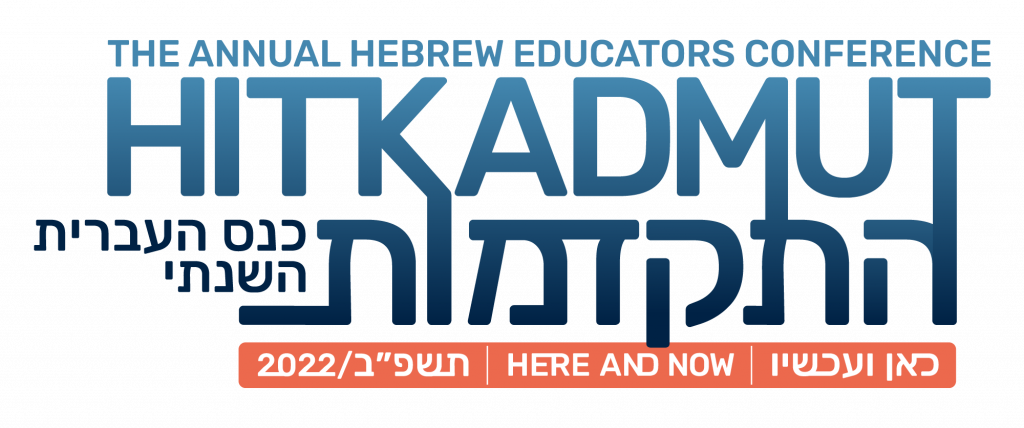Our Big Fat Greek Chanukah
Dr. Jeremy Benstein, HATC Senior Advisor
Most holidays have their own rituals or traditional foods, but how many can say they have their own toy? Chanukah not only has its own candelabrum, doughnut, and pancake, it has its own spinning top. Now that’s a holiday!
The name “Chanukah” comes from the root ח-נ-כ (ch-n-k), meaning “dedicate,” “initiate,” or “educate.” This reflects the Maccabean rededication of the Temple after it was profaned by Antiochus and the Syrian-Greeks. But to understand this festival more deeply, it helps to realize that this battle against foreign forces occurred against the backdrop of a long internal Jewish struggle—over political, religious, and cultural mores—between zealous traditionalists and Jews who had adopted Greek customs and beliefs, known as Hellenizers.

IT’S GREEK TO ME
In Hebrew, the Hellenizers are known as Mityav’nim, which includes the name for Greece, Yavan (related to the Greek province Ionia), in a binyan (grammatical structure) that describes a process of being or becoming: “those who became [like the] Greeks.”
The Maccabees opposed opening up Jewish culture to foreign influences and felt that the rival Mityav’nim had “in-Greciated” themselves to the occupying forces too much. Many key Chanukah terms actually have Greek roots. For instance, the central observance of this “holiday of lights” is lighting candles to fulfill the commandment of pirsumei nisa, as it’s phrased in the original Talmudic Aramaic, or in Hebrew, pirsum hanes, “to publicize the miracle.”
Whether you consider the נֵס nes, “miracle,” to be the Maccabees’ military victory over the Syrian-Greeks or the revelation that oil can be a renewable energy source depends on your theology. But it is the פרְִּסוםּ pirsum part that should raise your Hebraic eyebrow, as it is apparently from the Greek word parresia, meaning “to speak openly.” Thus, פרְִּסוםּ pirsum, in the context of Chanukah, has come full circle, with today’s פרְִּסומּאָיִם pirsuma’im, “(m)ad-men” (from pirsomet, “advertisement”), busy publicizing miraculous merchandise to last
GETTING OUT OF A JAM
While the mitzvah is in lighting the candles, Israelis associate this holiday no less with the ubiquitous jelly doughnut, the סופְּגנָּיִיָּה sufganiyah, which also has Greek roots. The fried cake soaks up the oil like a סְפוגֹ s’fog, “sponge.” Both the Hebrew סְפוגֹ s’fog and the English “sponge” are from the Greek word spongos. And while it’s a modern coinage, it is based on a Talmudic era delicacy called a סופְֹגןָ sofgan, which apparently was likewise a sort of “sponge cake.” And if some oil drips on the floor, no worries—we’ll do ספְּונֹגְ’ָּה spongah, colloquial Hebrew for “mopping up,” this time from Ladino, espongar.
The other great Chanukah food is the לבְִיבהָ l’vivah, a purely Hebraic term, which is used in the Bible to describe the cakes that Tamar made for her conniving half-brother Amnon (2 Samuel 13:8). They certainly weren’t the “potato pancakes” that we know today by the Yiddish name לטְַקעֶ latke. But believe it or not, the lovable Ashkenazi latke also harkens back to original Greek terms.
The etymological chain goes like this: The Yiddish word latke is from the Ukrainian word oldka (a pancake, fritter, or the like), which is from the Old Russian word olad’ya, which is from the Greek word eladia, meaning “a little oily thing,” which is from the ancient Greek words elaion, “olive oil,” or elaia, “olive”—making the name even more appropriate for a Chanukah food. These words, by the way, are also the bases of the English words “olive” and “oil” (not to mention “rock-oil,” aka petro-leum, and Vase-line). And whether you prefer Sephardi or Ashkenazi holiday delicacies, they’re both fried, and that’s tagenon in Greek, a source for the Hebrew tigun, “frying” (though there is of course the parallel Arabic tajin stewpot). Feel free to blame all those calories on this big fat Greek Chanukah.
THE HEBREW HAMMER
The heroes of the Chanukah story were the Maccabees, with the word מַכבִַּיּ Maccabee coming from one of two sources, this time Hebrew. It’s either an abbreviation for the first letters of the phrase Mi chamochah ba’elim Adonai?—meaning “Who is like You among the mighty, O God?” (Exodus 15:11)—or it comes from the Hebrew word makevet, meaning “hammer.” “Judah the Hammer” sounds so much like a pro-wrestling moniker that it’s no wonder the term Maccabee has been used in Israel to brand everything from beer to the most paradoxical of all, the Maccabiah Games. Whose idea was it to name the world’s largest Jewish sporting event, an imitation of the Olympics, a quintessentially Greek institution, after the zealous fighters of Hellenism? Judah and his brothers must be spinning like dreidels in their graves.
But how can we complain when the supreme body responsible for maintaining the purity of the Hebrew language is called the Akademya Lalashon Ha’ivrit, “the Academy of the Hebrew Language”? The word akademya itself is, of course, from the Greek.
At least one common English word comes from the name “Maccabee.” The Books of the Maccabees (not part of the Tanakh, and thus apocryphal, or extra-canonical) describe their martyrdom in gruesome detail. This became the source of the French danse Macabré, “Dance of Death,” a medieval artistic allegory on the universality of death, a concept that later filtered into the English language in the word “macabre.”
PUTTING A NEW SPIN ON IT
Let’s face it, for most of Jewish history, Chanukah was a fairly minor holiday. It owes its current prominent status to two distinct developments, its seasonal proximity to that other winter holiday, especially in North America, and the renaissance of Hebrew culture in Israel, which adopted the Maccabees and the Chanukah story as models of heroic national empowerment.
New elements of the holiday were being developed, and the reawakening Hebrew language needed words for them. For instance, the new word sufganiyah was coined by pioneering Hebrew educator David Yellin in 1897. At the same time, Hemda Ben Yehuda, Eliezer’s wife, invented the word chanukiyah, to differentiate the nine-branched Chanukah candelabrum from the seven-branched Temple Menorah (as well as from the word menorah in contemporary Hebrew, which can refer to any lamp).
And that Chanukah top? Apparently, Ben Yehuda’s son, aged five, invented the word סְביִבוןֹ s’vivon, from the root ס-ב-ב (s-b-b), meaning “around” or “turn.” His parents knew it by the Yiddish name dreidel, and it is reported that Hemda was overjoyed that this “first Hebrew son” contributed so intuitively to spoken Hebrew, then in the process of being reborn.
Though some take the message of Chanukah in a more nationalist direction, the linguistic multiculturalism of this festival and its universal theme of the return of light at the darkest time of year actually make it an ideal and inclusive winter holiday.
(excerpted from Hebrew Roots, Jewish Routes: A Tribal Language in a Global World, Jewish Lights, 2019).

